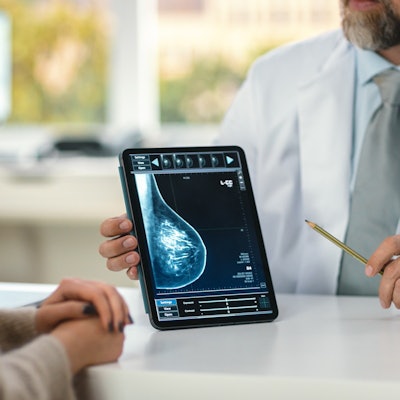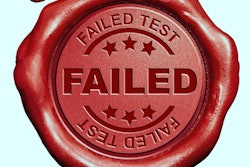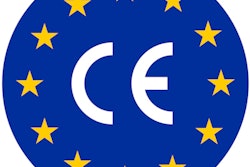
In double-reading scenarios, artificial intelligence (AI) can reduce breast imaging workload by over one-third by replacing one reader without causing a reduction in quality, suggests new research from Sweden.
In his talk at the RSNA congress in Chicago, Dr. Hakan Gustafsson from Linköping University showed results from his team's study showing the promise of AI by employing a threshold scoring system that flags imaging findings as high or low risk.
"In our study, we could have a substantial workload reduction of 33.8% and no missed cancers," Gustafsson told attendees.
In Östergötland County, Sweden, double reading is typically used in interpreting breast cancer screening images to reduce false positives while detecting more cancers. However, he said this high workload can be challenging for radiologists. Previous research also suggests this can add to economic burden for radiology departments.
For the study, Gustafsson and colleagues wanted to use their AI clinical support tool in a retrospective simulation to reduce workload in a safe, effective manner. They recorded 15,468 digital mammograms between September 2021 and February 2022 from a total of 15,468 women with an age range of 40 to 74. These included 53 screen-detected cancers.
Each mammogram was independently double read by two breast radiologists and processed by an AI system (Transpara). The system uses a 1-to-10 score on each exam. A higher score means an increased likelihood of cancer. Exams with a score below 7 were deemed low risk and selected for single reading, while exams scored 7 or higher were deemed high risk and selected for double reading.
The researchers found that the system scored a total of 10,473 exams (67.7%) with a score between 1 and 7. This triaging strategy would lead to 33.8% workload reduction, they suggested.
Also, 52 of the 53 screen-detected cancers were picked up by the AI system and received low-risk scores. The one cancer that AI missed, a grade II invasive cancer that received a score of 4, was detected by the radiologist in single reading.
The system had an area under the receiver operating curve (AUC) of 0.928. The readers meanwhile had an AUC of 0.834 and 0.959, respectively.
Gustafsson said this study can be viewed as the first phase of a longer-term study where the researchers implement AI step by step into workflows and work with more prospective data.



















